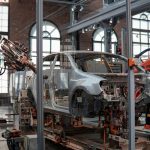The power of collaboration4 min read
Reading Time: 3 minutesReading Time: 3 minutesBig Tech firms play a significant role in the automotive industry’s evolution, often collaborating with traditional automakers while competing for consumer value. John Paul MacDuffie, Michael G. Jacobides, and Jennifer Tae conducted a Revisiting Disruption: Lessons from Automotive and Mobility Service Innovations study on the automotive industry’s disruption dynamics. The shift from Internal Combustion Engine Vehicles (ICEVs) to Battery Electric Vehicles (BEVs) has yet to lead to the anticipated industry upheaval. Instead, the existing industry architecture has shown resilience, with industry structures remaining essentially unchanged. Traditional automakers maintain significant control through vertical integration, strategic alliances, and extensive regulatory expertise. They leverage decades of R&D investments and a substantial knowledge base. Integrated production facilities and strong brand differentiation further bolster their position, enabling them to manage technological disruptions effectively and maintain consumer trust.
The role of Big Tech and ecosystem dynamics
The study also explores how Big Tech companies collaborate with traditional automakers, balancing competition and cooperation in this ecosystem. Companies such as Google, Apple, and Tesla are not merely competitors but also collaborators. These digital giants engage with traditional automakers to enhance consumer value through advanced technologies and services.
Integrating CAS technologies affects automakers’ strategies, pushing them to collaborate and innovate within a mobility ecosystem. CAS Tech refers to advanced technologies transforming the automotive and mobility sectors. CAS stands for Connected, Autonomous, and Shared technologies, each contributing to significant changes in how vehicles are designed, operated, and utilized. So, incumbents adapt and collaborate with new entrants and digital players. These dynamics lead to creating multi-product ecosystems where digital and physical products converge.
Introducing the “Mark 3” model
The “Mark 3” collaboration model presents a sophisticated approach to understanding innovation dynamics in the automotive sector. This model highlights the strategic integration of new technologies through extensive R&D and emphasizes the importance of collaboration with startups and Big Tech firms via acquisitions, alliances, and joint ventures.
Ecosystem participation is central to this model, fostering knowledge exchange and ensuring relevance amid rapid technological advances. The model also underscores the concept of coopetition, where industry players cooperate on specific technologies while competing for market dominance. Regulatory frameworks play a significant role in shaping these dynamics, influencing data ownership and access, which are critical for the success of new business models in the mobility sector. This comprehensive perspective demonstrates how established automakers can adapt to and thrive in disruptive technological change through strategic collaborations and ecosystem engagement.
Key components of the “Mark 3” model include:
1. Strategic Integration and R&D
Incumbents utilize their substantial R&D capabilities to integrate emerging technologies, maintaining control and adaptability.
2. Collaboration with Innovators
Partnerships with startups and Big Tech firms facilitate the exchange of knowledge and resources, enabling effective adoption of new technologies.
3. Ecosystem Participation
Forming and participating in ecosystems where various players work together to develop comprehensive solutions.
4. Coopetition
The coexistence of cooperation and competition among industry players, balancing mutual benefits with competitive strategies.
5. Regulatory Influence
Navigating and influencing regulatory frameworks to shape industry dynamics, particularly concerning data ownership and safety.
For instance, GM’s joint venture with LG Energy Solution to produce batteries showcases strategic integration. Ford’s extensive investments in electrification and autonomous driving technologies highlight the resilience and adaptability of traditional automakers. The Mobility in Harmony (MIH) consortium, led by Foxconn, exemplifies ecosystem participation, bringing together partners from major automotive suppliers to smaller Original Equipment Manufacturers (OEM).
Conclusion
The paper Revisiting Disruption: Lessons from Automotive and Mobility Service Innovations provides a compelling reevaluation of how technological disruption impacts the automotive industry. By highlighting the resilience of incumbents and the collaborative nature of innovation, the study challenges the notion of inevitable upheaval driven by new entrants. The “Mark 3” model offers a robust framework for understanding the interplay between traditional automakers, startups, and Big Tech, emphasizing strategic collaboration and ecosystem dynamics. This nuanced perspective underscores the importance of adaptability and strategic partnerships in navigating the complexities of technological change in the automotive sector.
***
Michael G. Jacobides is the Sir Donald Gordon Professor of Entrepreneurship & Innovation and Professor of Strategy at London Business School. His research focuses on industry evolution, value migration, and digital platforms, earning publication in top academic journals. Jacobides has been a visiting scholar at institutions like Harvard and NYU and has received numerous accolades, including the Thinkers50 recognition and the Theory to Practice Award. He also contributes to major publications and speaks at global forums. Michael advises the Hellenic Competition Commission on the digital economy and collaborates with leading consulting firms and corporations.




